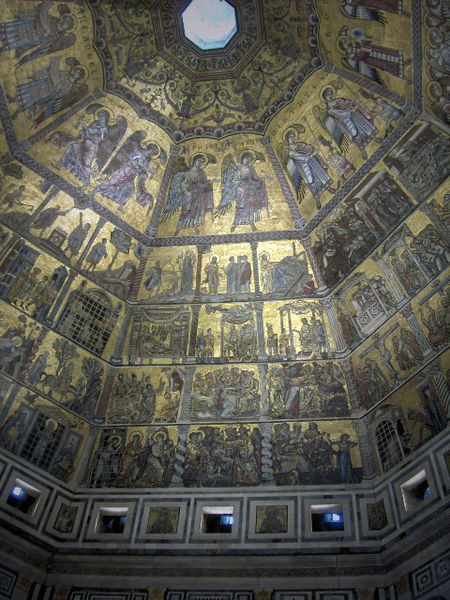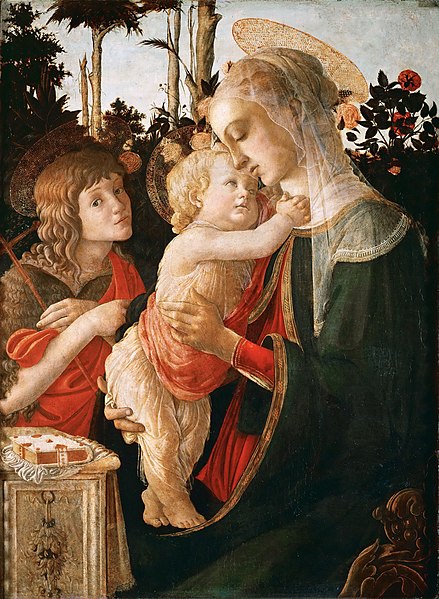Florentine painting or the Florentine School refers to artists in, from, or influenced by the naturalistic style developed in Florence in the 14th century, largely through the efforts of Giotto di Bondone, and in the 15th century the leading school of Western painting. Some of the best known painters of the earlier Florentine School are Fra Angelico, Botticelli, Filippo Lippi, the Ghirlandaio family, Masolino, and Masaccio.
Filippo Lippi, Adoration in the Forest, by 1459
Cimabue, Madonna of Santa Trinita, c. 1285, once in the church of Santa Trinita, now in the Uffizi Gallery.
Mosaic ceiling of the Baptistery of St John in Florence, dating from around 1225.
Giotto's fresco, the Mourning of St. Francis in the Bardi chapel of Santa Croce.
Alessandro di Mariano di Vanni Filipepi, better known as Sandro Botticelli or simply Botticelli, was an Italian painter of the Early Renaissance. Botticelli's posthumous reputation suffered until the late 19th century, when he was rediscovered by the Pre-Raphaelites who stimulated a reappraisal of his work. Since then, his paintings have been seen to represent the linear grace of late Italian Gothic and some Early Renaissance painting, even though they date from the latter half of the Italian Renaissance period.
Probable self-portrait of Botticelli, in his Adoration of the Magi (1475).
Detail from Botticelli's most famous work, The Birth of Venus (c. 1484–1486)
Via Borgo Ognissanti in 2008, with the eponymous church halfway down on the right. Like the street, it has had a Baroque makeover since Botticelli's time.
Madonna and Child with St. John the Baptist, c. 1470–1475, Louvre








